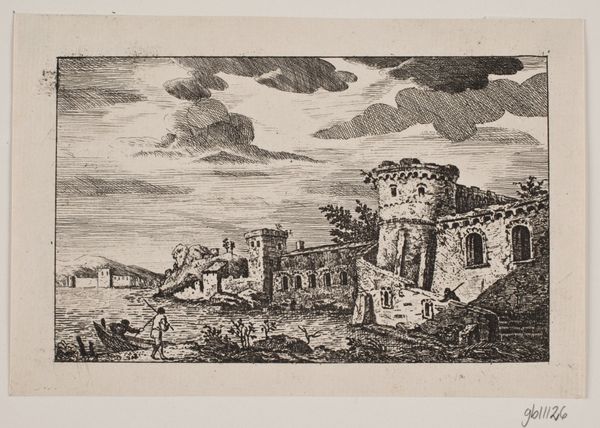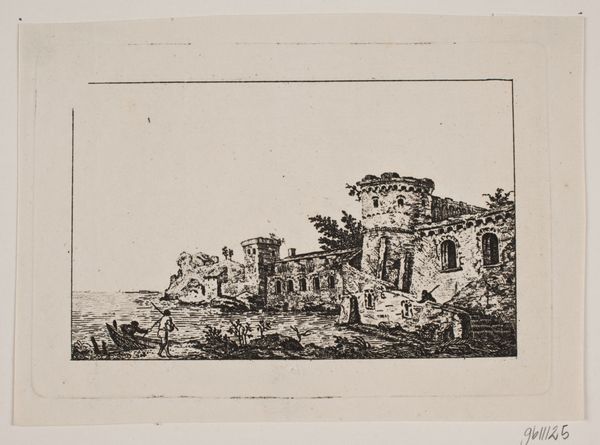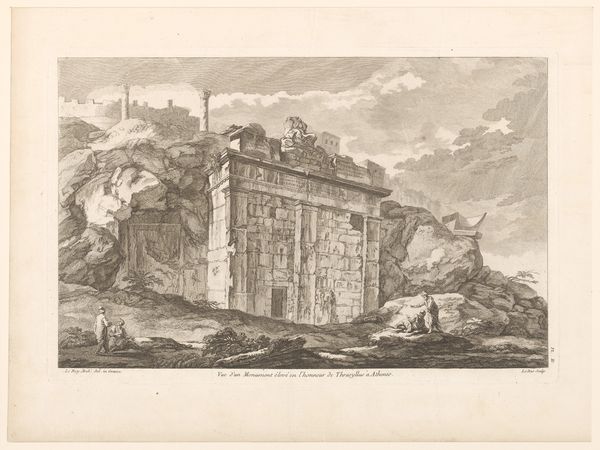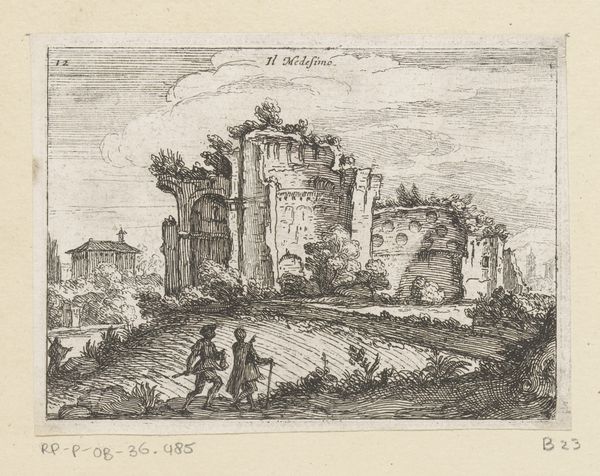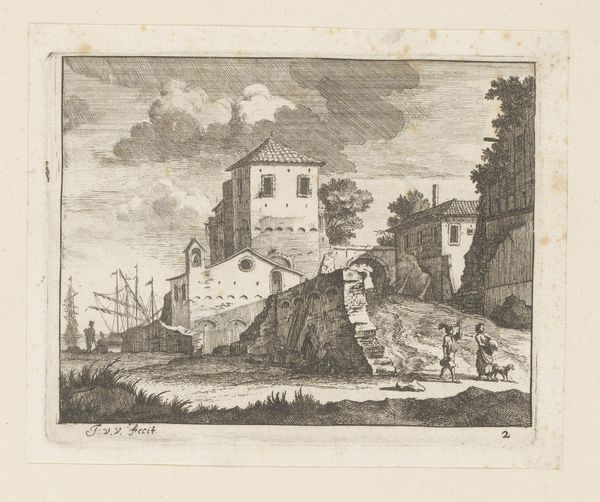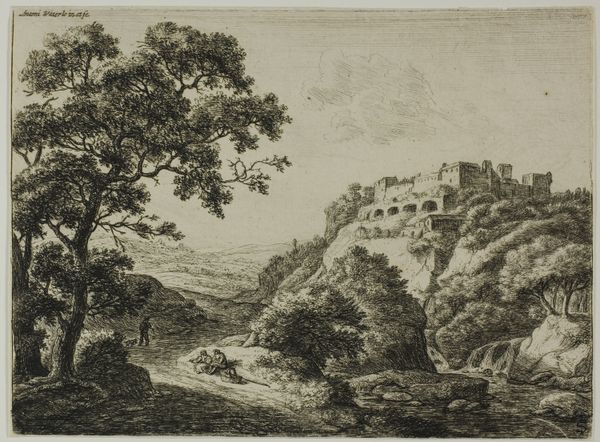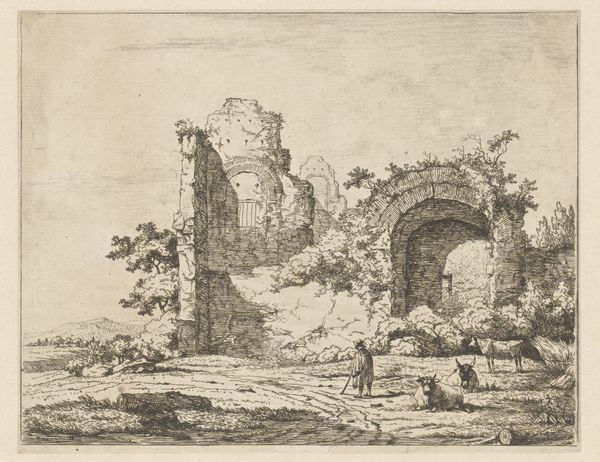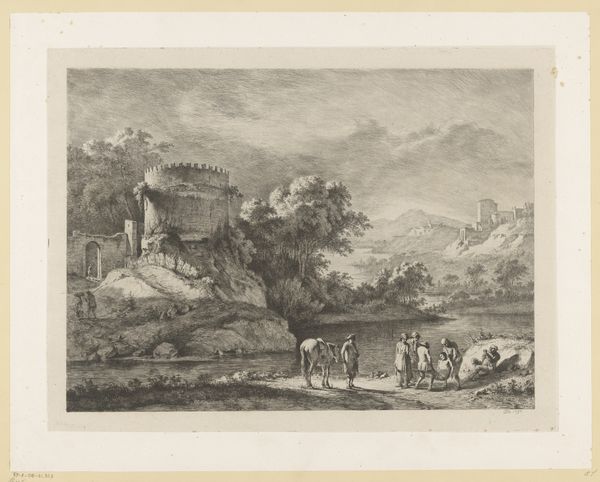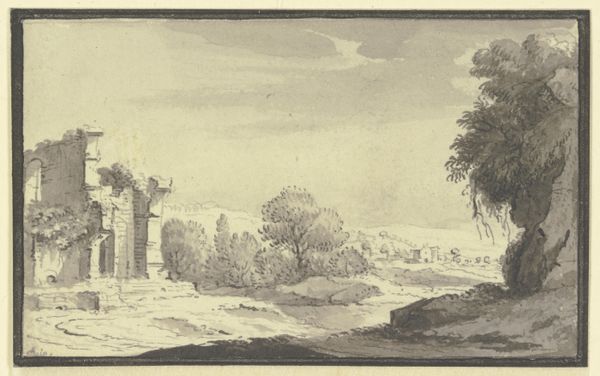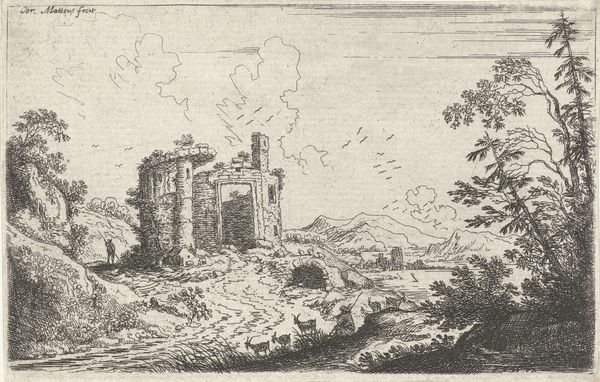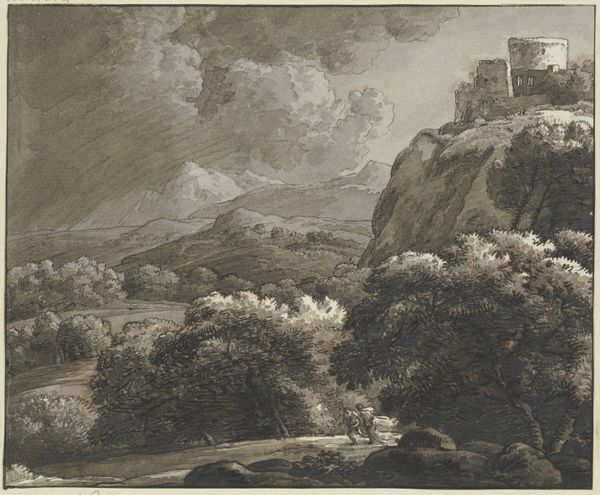
Dimensions: 95 mm (height) x 151 mm (width) (plademaal)
Johan Bülow created this print, "Gammel by," using etching, a printmaking technique, sometime before his death in 1828. With etching, a metal plate, usually copper, is coated with a waxy, acid-resistant substance called a ground. The artist scratches an image into this ground, exposing the metal beneath. When the plate is immersed in acid, the exposed lines are "bitten" or etched into the metal. The longer the plate sits in the acid, the deeper the lines, and the darker they will appear in the final print. The process is very labor intensive. It's clear Bülow used etching to mimic the appearance of a drawing, but the final print is in fact the product of intense labor and specialized knowledge. This reproductive capacity made etching an ideal medium for circulating images during the Enlightenment, contributing to a broader visual culture and enabling the wider dissemination of ideas. It also brings up important questions about originality and value at a time of immense change in the art world.
Comments
No comments
Be the first to comment and join the conversation on the ultimate creative platform.
